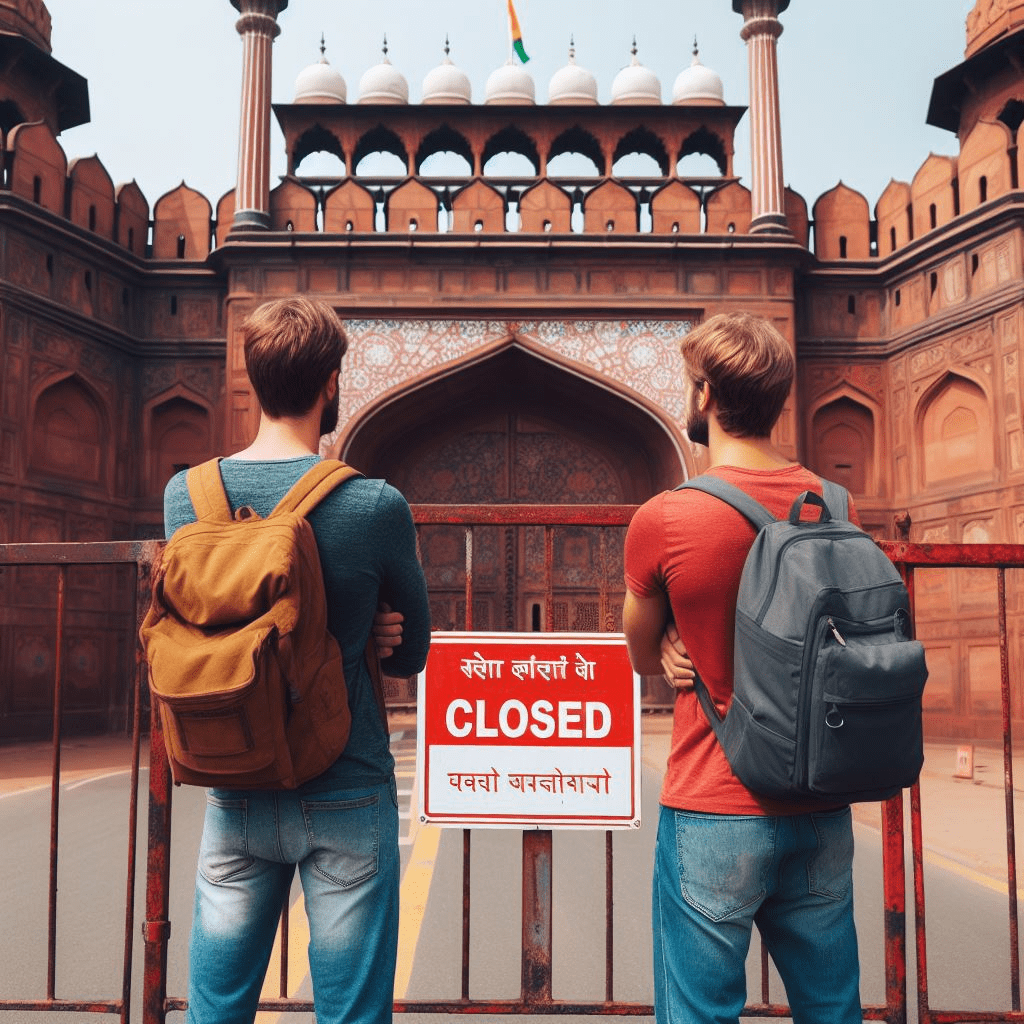From the iconic Taj Mahal to vibrant wildlife reserves, planning your itinerary with closure days in mind ensures you make the most of your trip. Here’s a clear, detailed guide to navigating weekly closures for monuments, museums, and national parks, plus practical tips to enhance your travel experience.
National Monuments & World Heritage Sites
India’s monuments, many of which are UNESCO World Heritage Sites, are a highlight for travelers. Most are open daily, but some have specific closure days to note:
- Taj Mahal (Agra): Closed every Friday for prayers at the mosque within the complex. Plan your visit from Saturday to Thursday, ideally at sunrise for fewer crowds and stunning light for photos.
- Red Fort (Delhi): Open daily, but the museum inside may close on Mondays. Check for special evening sound-and-light shows for a unique experience.
- Qutub Minar (Delhi): Open all week, but nearby Mehrauli Archaeological Park may have varying hours.
- Hawa Mahal (Jaipur): Open daily, but avoid peak afternoon hours due to heavy foot traffic.
- Ajanta & Ellora Caves (Maharashtra): Closed on Mondays (Ajanta) and Tuesdays (Ellora). Plan a two-day visit to cover both.
Insight: Many monuments charge higher entry fees for foreign tourists (e.g., ₹600 for Taj Mahal vs. ₹50 for Indian citizens). Consider purchasing a composite ticket in cities like Jaipur for multiple sites to save money.
Tip: Always verify closure days on the Archaeological Survey of India (ASI) website (https://asi.nic.in/) or by searching “[monument name] weekly closure.” Local guides or hotel staff can also provide updates. Carry a small amount of cash, as some smaller sites may not accept digital payments.
Museums
India’s museums offer a deep dive into its art, history, and culture, but many follow a standard closure day:
- National Museum (Delhi): Closed on Mondays. Plan to spend at least 2-3 hours here to explore artifacts like the Harappan Dancing Girl.
- Chhatrapati Shivaji Maharaj Vastu Sangrahalaya (Mumbai): Also closed on Mondays. Its textile and miniature painting collections are a must-see.
- Regional Museums: Closure days vary. For example, the Government Museum in Chennai closes on Fridays, while the Indian Museum in Kolkata closes on Mondays.
Insight: Smaller museums, like the Salar Jung Museum in Hyderabad, may have shorter hours or unexpected closures during festivals. Check official websites or call ahead.
Tip: Many museums offer guided tours or audio guides in English—opt for these to gain deeper context. Photography rules vary, so confirm before snapping pictures.
National Parks & Wildlife Reserves
India’s national parks, home to tigers, elephants, and rhinos, are a thrill for nature lovers. However, closures vary by park:
- Common Closure Days: Most parks close one day a week, typically Tuesdays or Wednesdays. For example:
- Ranthambore National Park (Rajasthan): Closed on Tuesdays.
- Jim Corbett National Park (Uttarakhand): Closed on Wednesdays during the core zone safari season.
- Seasonal Closures: Many parks, like Kaziranga (Assam) and Sundarbans (West Bengal), close entirely during the monsoon season (June–September) for safety and wildlife breeding.
- Special Closures: Some zones within parks may close for maintenance or conservation. For instance, Kanha National Park (Madhya Pradesh) may limit access during tiger breeding periods.
Insight: Safari bookings open months in advance and sell out quickly for popular parks like Ranthambore. Book through official websites like https://moef.gov.in/ or authorized operators to avoid scams.
Tip: Morning safaris offer better wildlife sightings due to cooler temperatures. Carry binoculars, wear neutral-colored clothing, and avoid strong perfumes to respect wildlife.
Planning Tips for a Seamless Trip
- Research in Advance: Cross-check closure days for your must-visit sites using official sources like ASI (https://asi.nic.in/) for monuments or the Ministry of Environment, Forest and Climate Change (https://moef.gov.in/) for parks. Reputable travel guides like Lonely Planet or Rough Guides also provide reliable updates.
- Build Flexibility: Unexpected closures due to festivals, maintenance, or local events are common. Have a backup plan, like visiting a nearby temple, market, or local eatery. For example, if the Taj Mahal is closed, explore Agra Fort or the vibrant Kinari Bazaar.
- Alternative Activities: If a site is closed, pivot to nearby attractions. In Delhi, if the National Museum is closed, visit Humayun’s Tomb or the bustling Chandni Chowk for street food. In Jaipur, swap a closed museum for a trip to Amber Fort or a block-printing workshop.
- Leverage Local Knowledge: Chat with locals, guides, or your hotel’s concierge for real-time updates on closures or lesser-known attractions. For instance, in Varanasi, locals might recommend hidden ghats or evening aarti ceremonies.
- Pack Smart: Carry a reusable water bottle, sunscreen, and comfortable shoes for long walks at monuments. For parks, bring insect repellent and a hat. Respect dress codes at religious sites—cover shoulders and knees.
- Timing Matters: Visit popular sites early in the morning or late afternoon to avoid crowds and heat, especially in summer (March–May). For example, the Golden Temple in Amritsar is serene at dawn, with fewer visitors.
Additional Resources
- Archaeological Survey of India (ASI): https://asi.nic.in/ – Detailed info on centrally protected monuments, including entry fees and hours.
- Ministry of Environment, Forest and Climate Change: https://moef.gov.in/ – Updates on national parks and wildlife sanctuaries, including safari bookings.
- Incredible India: https://www.incredibleindia.org/ – Official tourism site with itineraries, tips, and regional insights.
- Local Tourism Boards: State-specific websites (e.g., Rajasthan Tourism, Kerala Tourism) offer tailored advice for regional attractions.
Categories :


